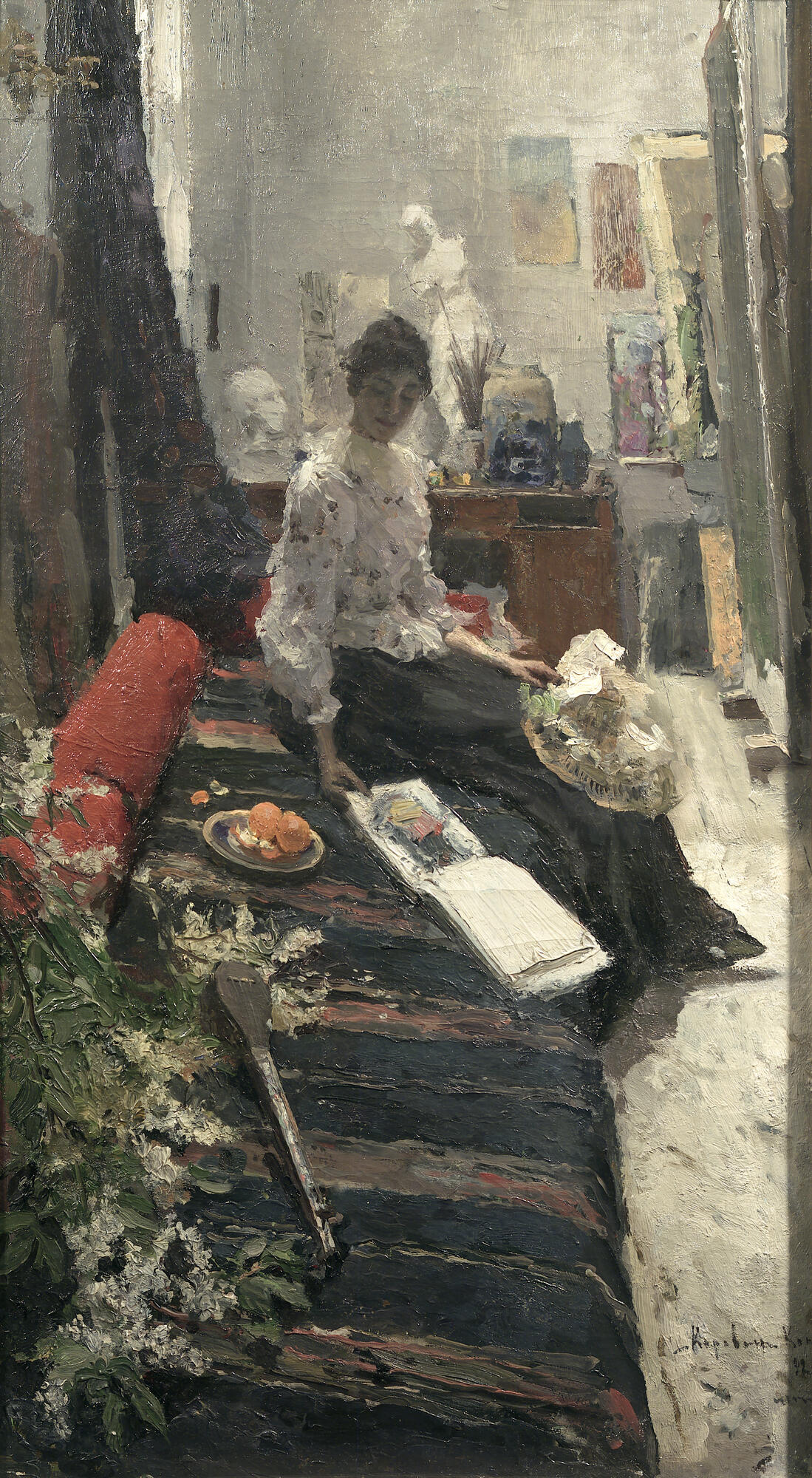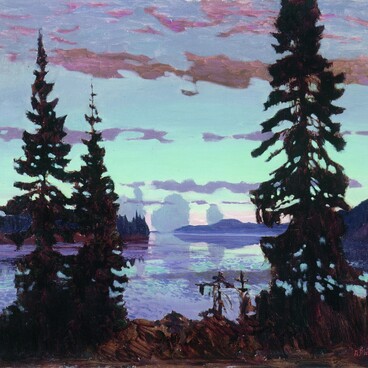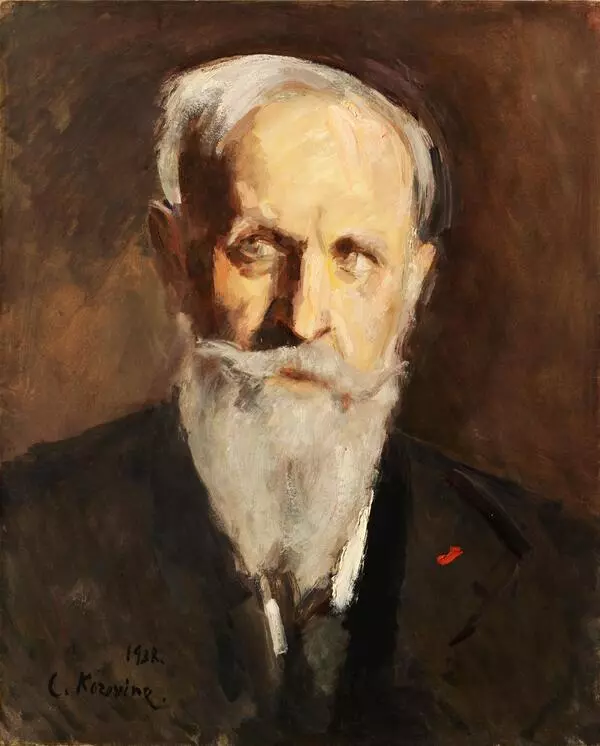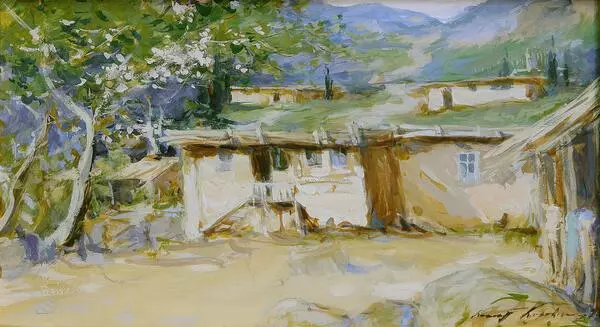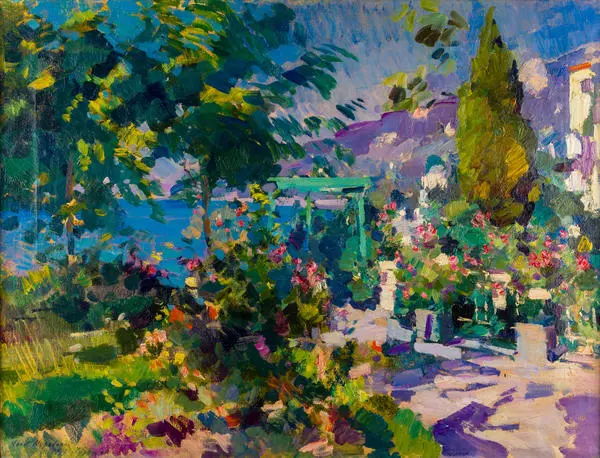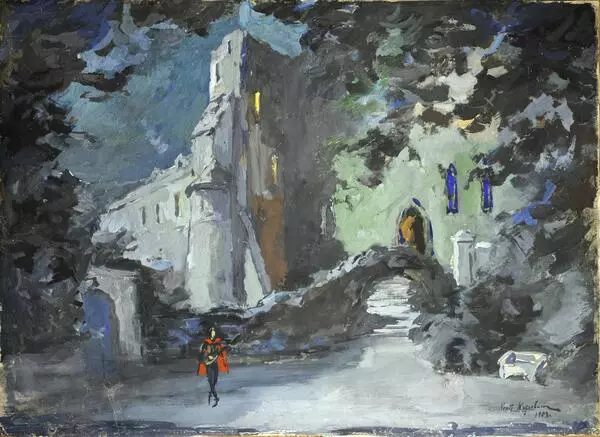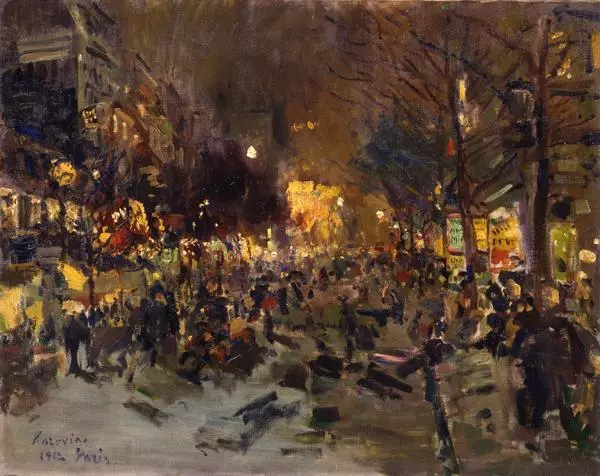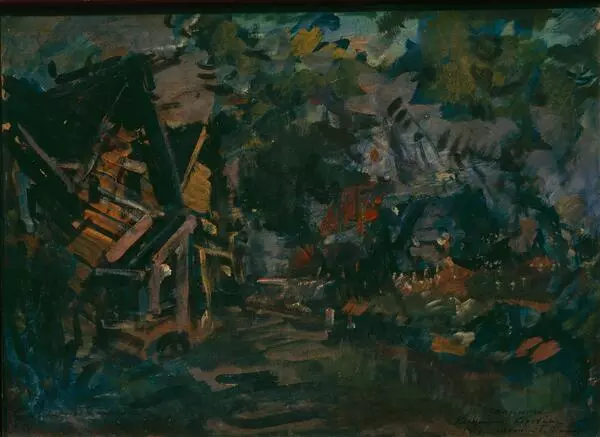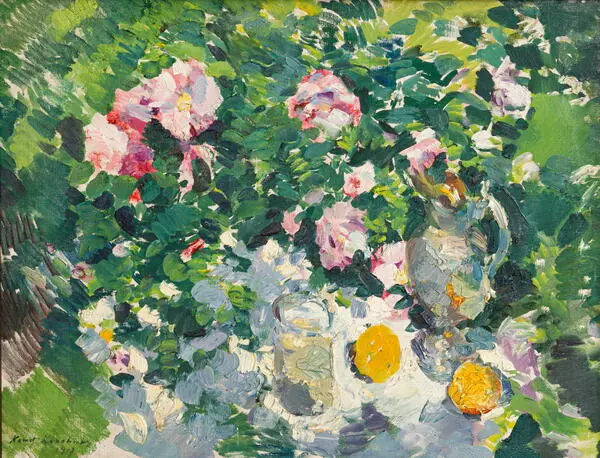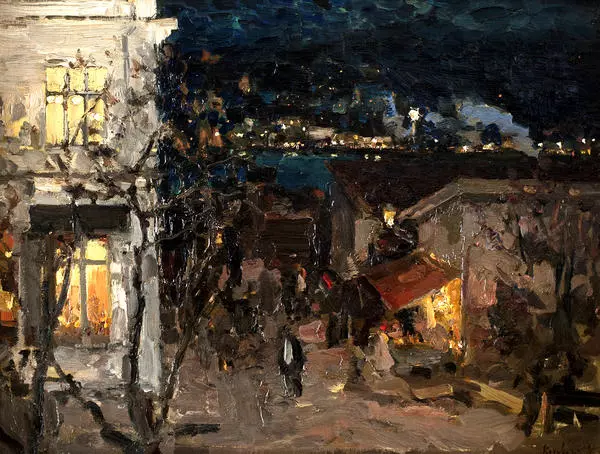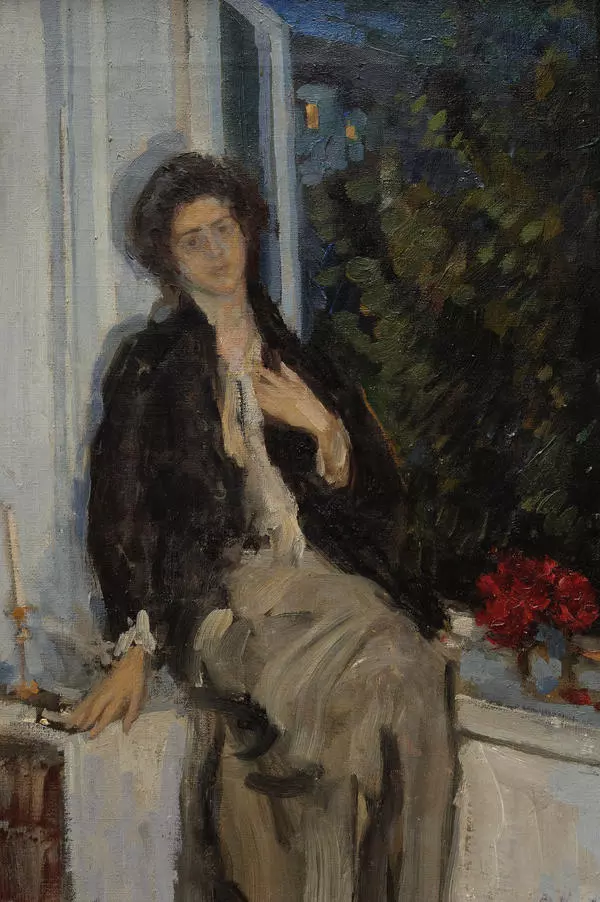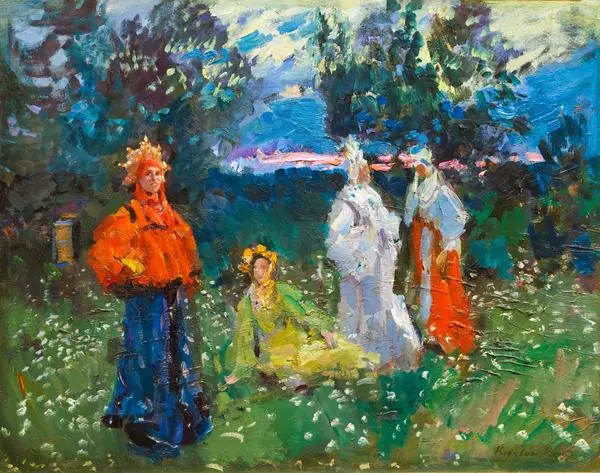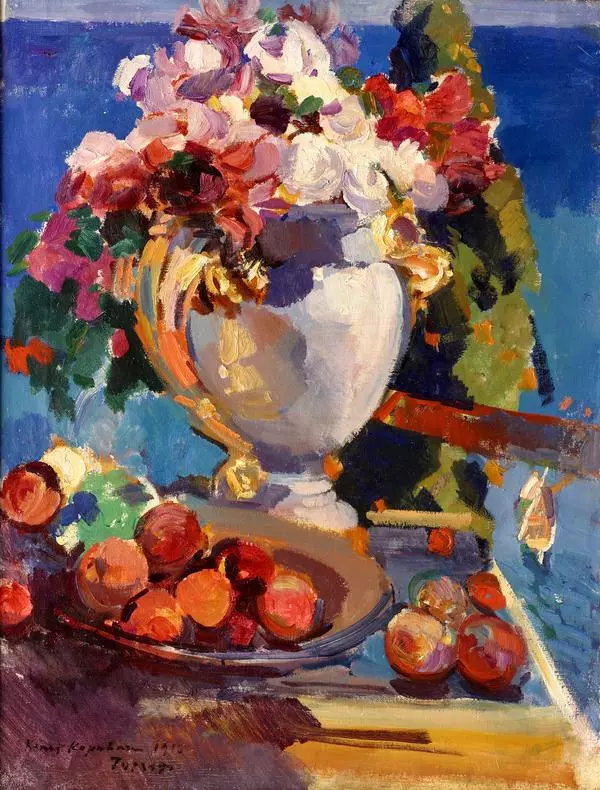Konstantin Korovin was an outstanding artist, one of the main representatives of the Russian school of Impressionism. His artistic searches for almost four decades started in the 1880s and determined the appearance and development of the Russian impressionism. Korovin spent a lot of time in Europe, particulary in Paris, thereby enriching his artistic experience with new figurative methods that were not previously used by themes and motives. Among other things, Korovin was a brilliant teacher, thanks to whom artists such as Fyodor Fedorovsky, Sergei Gerasimov, Robert Falk, Sergei Sudeikin, Leonard Turzhansky and others emerged.
Konstantin Korovin worked in the technique of mainly single-layer painting “a la prima”, “raw”, without underpainting. This technical approach was original and most consistent with the impressionist style. This method was based on perfect mastery of drawing and subtle coloristic flair. Korovin’s contemporaries, observing his work, confirmed: ‘Konstantin Alekseevich painted very quickly. Looking closely at nature, he applied the colors he needed to the palette, sketched a barely noticeable drawing with coal and began to paint. The impression was that on the palette he sees his future canvas entirely. He finished the thing in two or three sessions. "
The exhibition presents six works by the artist, which perfectly reflect the different creative periods of Korovin. The painting was created in 1892 and belongs to the time of Korovin’s second trip to Paris. The largest number of Korovin’s works from this trip was devoted to a topic that has almost never been encountered in his work before - the depiction of a workshop with the figure of a model. This is the work ‘In the Artist’s Studio’ from the collection of the The Vasnetsov Brothers Art Museum. In this painting, the artist pays special attention to the picturesque side. He was in search of new artistic solutions. Striving for a greater tonal unification of color, Korovin built the coloring mainly on gray, while at the same time not abandoning warm ocher scales. The artist rendered space mainly in gray and its shades.
On his first trip in 1887, he noted the abundance of light and pearl-gray tones in French Impressionist painting. The choice of angle and point from which the artist builds the composition is interesting. Korovin seems to be looking both from above and below at space. The work was donated to the Museum by the Moscow philanthropist Margarita Morozova and was included in the 37 works that made up the first exposition of the Museum in 1910.
Konstantin Korovin worked in the technique of mainly single-layer painting “a la prima”, “raw”, without underpainting. This technical approach was original and most consistent with the impressionist style. This method was based on perfect mastery of drawing and subtle coloristic flair. Korovin’s contemporaries, observing his work, confirmed: ‘Konstantin Alekseevich painted very quickly. Looking closely at nature, he applied the colors he needed to the palette, sketched a barely noticeable drawing with coal and began to paint. The impression was that on the palette he sees his future canvas entirely. He finished the thing in two or three sessions. "
The exhibition presents six works by the artist, which perfectly reflect the different creative periods of Korovin. The painting was created in 1892 and belongs to the time of Korovin’s second trip to Paris. The largest number of Korovin’s works from this trip was devoted to a topic that has almost never been encountered in his work before - the depiction of a workshop with the figure of a model. This is the work ‘In the Artist’s Studio’ from the collection of the The Vasnetsov Brothers Art Museum. In this painting, the artist pays special attention to the picturesque side. He was in search of new artistic solutions. Striving for a greater tonal unification of color, Korovin built the coloring mainly on gray, while at the same time not abandoning warm ocher scales. The artist rendered space mainly in gray and its shades.
On his first trip in 1887, he noted the abundance of light and pearl-gray tones in French Impressionist painting. The choice of angle and point from which the artist builds the composition is interesting. Korovin seems to be looking both from above and below at space. The work was donated to the Museum by the Moscow philanthropist Margarita Morozova and was included in the 37 works that made up the first exposition of the Museum in 1910.
